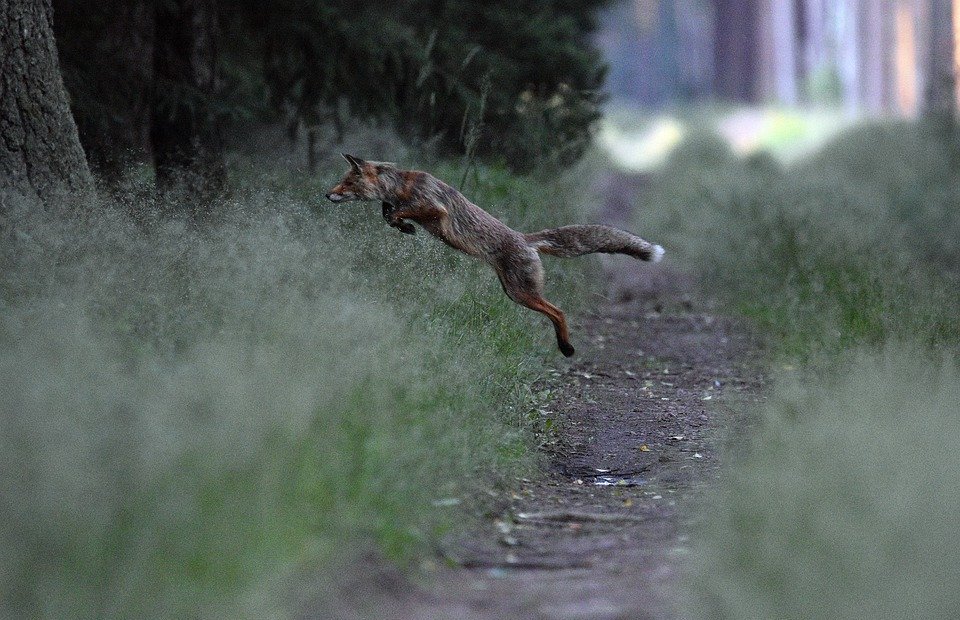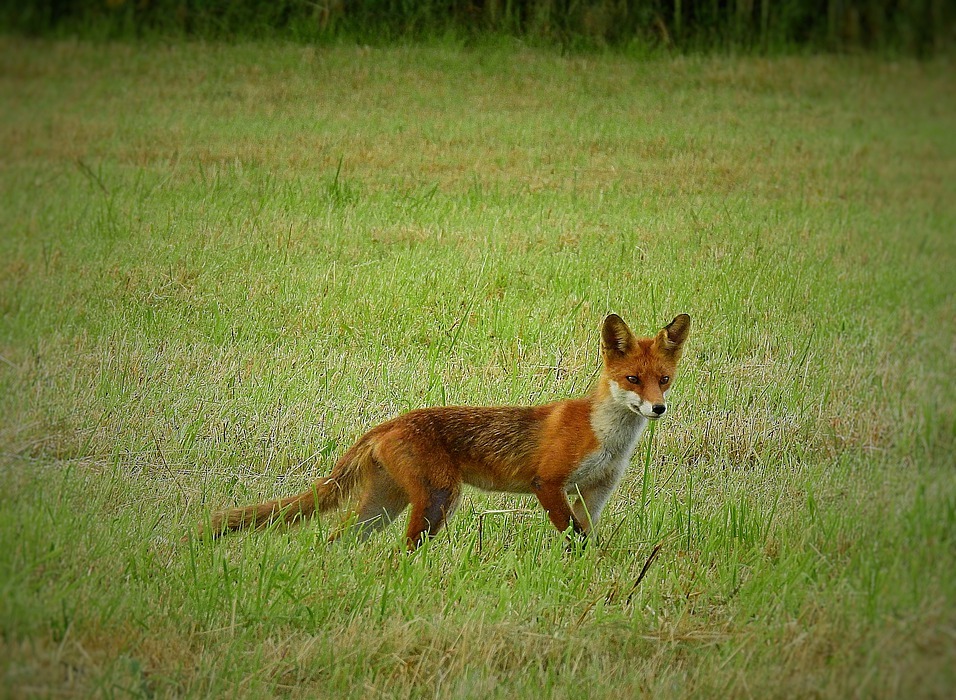This article delves into the complex relationship between foxes and cats, exploring their potential interactions in a British context. We will examine the natural behaviours of both species, assess the risks foxes pose to cats, and provide practical advice on how to minimize potential dangers. We'll also address common questions about fox-cat encounters, providing a comprehensive understanding of this intriguing topic.
Part 1: Understanding the Players - Foxes and Cats

1.1. The Red Fox: A Familiar Neighbour
1.1.1. Habitat and Distribution
Red foxes are widespread throughout Britain, thriving in a variety of habitats, including woodlands, meadows, parks, and even urban areas. Their adaptability allows them to thrive in close proximity to humans.
1.1.2. Dietary Habits and Hunting Strategies
Red foxes are opportunistic omnivores, their diet ranging from small mammals like voles and rabbits to insects, birds, fruits, and even carrion. Their hunting strategies are varied, employing stealth and cunning to catch prey.
1.1.3. Social Structure and Territorial Behaviour
Foxes are typically solitary animals, except during mating season when they form pairs. They are known for their complex social interactions, marking territories with urine and scent glands, and communicating through a variety of vocalizations.
1.2. The Domestic Cat: A Skilled Hunter
1.2.1. Evolutionary Heritage and Predatory Instincts
Domestic cats evolved from wildcats and retain their inherent predatory instincts. Their agile bodies, sharp claws, and keen senses make them efficient hunters.
1.2.2. Home Ranges and Territoriality
Cats are highly territorial, establishing home ranges that they fiercely defend from other cats. Their territories often overlap, leading to conflicts with other cats and sometimes, even foxes.
1.2.3. Behavioural Adaptations for Hunting
Cats are excellent stalkers, using their keen eyesight and hearing to locate prey. Their hunting tactics involve ambushes and swift pounces, often using their sharp claws to subdue their targets.
Part 2: The Potential for Conflict: Foxes and Cats

2.1. The Nature of Encounters
2.1.1. Frequency of Fox-Cat Interactions
While not always frequent, encounters between foxes and cats are increasingly common, particularly in areas with high fox populations and limited green spaces.
2.1.2. Behavioural Patterns during Encounters
Foxes typically exhibit caution and avoidance when encountering cats. However, if a cat is perceived as a threat or a potential food source, a confrontation might occur.
2.1.3. Factors Influencing Conflict
Conflicts are more likely to arise when resources are scarce, particularly food. Territorial disputes over prime hunting grounds can also lead to confrontations.
2.2. Risks to Cats: Predation and Competition
2.2.1. Predation Risk to Cats by Foxes
While rare, foxes can prey on young, sick, or elderly cats, particularly if they are unattended or vulnerable. Factors like food scarcity and high fox populations can increase predation risk.
2.2.2. Competition for Resources
Foxes and cats can compete for food resources, especially in areas with limited prey availability. This competition can lead to tensions and potential conflicts.
2.2.3. Territorial Disputes: Overlapping Ranges
As mentioned earlier, cats and foxes can come into conflict over overlapping territories, leading to confrontations and potentially, injuries.
Part 3: Examining the Risks

3.1. Physical Attacks: Bite Wounds and Disease Transmission
3.1.1. Bite Wounds
Foxes, despite their generally shy nature, can inflict serious bite wounds on cats. These wounds can be painful and prone to infection.
3.1.2. Disease Transmission
Foxes are known to carry diseases like rabies and toxoplasmosis, which can be transmitted through bites or contact with infected saliva.
3.2. Stress and Anxiety in Cats
3.2.1. Territorial Discomfort
Regular encounters with foxes, particularly if they are perceived as a threat, can induce stress and anxiety in cats. This can manifest in behavioural changes, including hiding and increased aggression.
3.2.2. Behavioural Changes: Signs of Stress
Cats may show signs of stress like loss of appetite, increased grooming, restlessness, and avoidance of specific areas. These signs can indicate underlying anxiety stemming from fox encounters.
Part 4: Mitigating the Risks: Practical Strategies
4.1. Prevention: Securing Outdoor Spaces and Reducing Attractants
4.1.1. Secure Fencing and Barriers
Ensuring cats have secure outdoor spaces with high fences, netting, or other barriers can prevent fox encounters and reduce the risk of predation.
4.1.2. Minimising Attractants: Food and Shelter
Reducing food sources for foxes by securing bins, removing bird feeders, and cleaning up spills can discourage them from visiting your garden. Limiting access to potential shelter like sheds or undergrowth can also be helpful.
4.1.3. Keeping Cats Indoors at Night
Supervising cats outdoors, especially at night, can help minimize their risk of encountering foxes during the fox's active hours.
4.2. Managing Encounters: Scare Tactics and Other Measures
4.2.1. Scare Tactics
Loud noises, water sprays, or motion-activated lights can deter foxes from gardens or areas where cats frequent. These can act as a deterrent and discourage fox visits.
4.2.2. Supervised Outdoor Access
Closely supervising cats when they are outside, particularly in areas known to be frequented by foxes, can help avoid potential encounters.
4.2.3. Using Scent Deterrents
Foxes have a strong sense of smell, and certain scents like garlic, cayenne pepper, or citrus can deter them from entering your garden.
Part 5: Co-existing with Foxes: Understanding and Respect
5.1. Learning to Co-exist with Foxes
5.1.1. Recognising Fox Signposts
Learning to recognize signs of fox activity, such as paw prints, droppings, or the smell of fox urine, can help understand fox behaviour and predict their presence in your garden.
5.1.2. Respecting Nocturnal Habits
Respecting the nocturnal habits of foxes and avoiding disturbing them, especially during denning or mating season, can help minimize potential conflicts.
5.2. Safeguarding Cats and Respecting Wildlife
5.2.1. Microchipping and Identification Tags
Ensure cats are microchipped and wear collars with identification tags in case they encounter a fox or get lost.
5.2.2. Responsible Pet Ownership
Remember that foxes are wild animals and should be treated with caution and respect. Avoid feeding foxes, as this can make them habituated to humans and potentially a nuisance.
Part 6: FAQs: Addressing Common Questions
6.1. What should I do if I see a fox in my garden?
If you see a fox, observe it from a distance. Do not approach it, and keep your cats indoors. Foxes are generally shy and will usually avoid humans, but it's best to err on the side of caution.
6.2. How can I prevent foxes from entering my garden?
You can deter foxes by securing your bins, removing bird feeders, cleaning up spills, and using motion-activated lights or water sprays. Ensure your fence is secure, and remove potential entry points like gaps or loose boards.
6.3. What should I do if my cat gets bitten by a fox?
If your cat is bitten by a fox, seek veterinary attention immediately. The wound should be cleaned and disinfected, and your cat may need antibiotics to prevent infection. Report the incident to your local council or animal control for potential rabies testing.
6.4. Are foxes a danger to other pets?
Foxes may pose a threat to smaller pets like rabbits, guinea pigs, or hamsters. While they are not typically aggressive towards dogs, it's best to keep pets under supervision when they are outside.
6.5. What should I do if I find a fox cub?
If you find a fox cub that appears to be orphaned or injured, do not approach it. Contact your local wildlife rescue organisation, as they are best equipped to handle such situations.
6.6. Can I feed foxes?
While it may seem tempting to feed foxes, it's not recommended. This can encourage them to become habituated to humans and may lead to them becoming a nuisance or a potential danger.
6.7. What are the signs that a fox might be living in my garden?
Foxes often leave clues behind that indicate their presence, such as:
Paw prints: Look for distinctive four-toed prints with a small pad in the centre.
Droppings: Fox droppings are typically cylindrical and pointed at one end.
Urine markings: Foxes will urinate to mark their territory, leaving a strong, musky scent.
Scratch marks: Foxes may leave scratch marks on trees or fences as they mark their territory.
Foxholes: Look for areas of disturbed soil or dug-out areas that may indicate a fox den.
6.8. What should I do if I see a fox acting unusually?
If you observe a fox acting strangely, like staggering, exhibiting aggression, or appearing disoriented, do not approach it. It might be sick or injured, or potentially have rabies. Contact your local council or animal control for advice on handling the situation safely.
Everyone is watching
-

Are Cat Ribs Flexible? Understanding Their Anatomy
CATS & KITTENSThis article delves into the fascinating world of feline anatomy, exploring the flexibility of cat ribs and ho...
-

Can Cats Eat Bananas? (Everything You Need to Know)
CATS & KITTENSThis article dives into the intriguing question of whether cats can safely enjoy the sweet, yellow fruit, bana...
-

Cat Lifespan: How Long Do Cats Live?
CATS & KITTENSThis comprehensive guide explores the factors influencing the lifespan of our feline companions, providing ins...
-

Can Cats Get COVID-19? What You Need to Know
CATS & KITTENSThis article will delve into the fascinating world of feline COVID-19 susceptibility. We'll explore whether ca...
-

Can Cats Eat Eggs? A Complete Guide to Egg Safety for Your Feline Friend
CATS & KITTENSWhen it comes to treating our furry companions, we all want to ensure we're doing what's best for them. Eggs...
